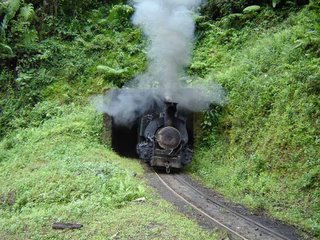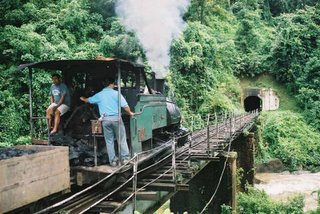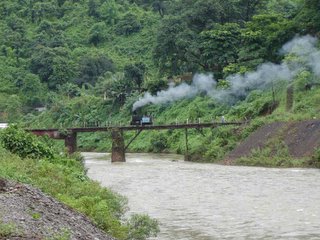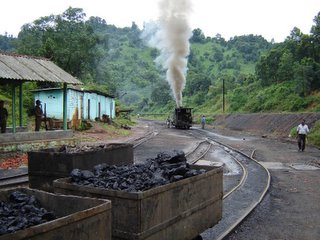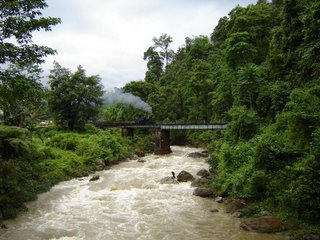February 3, 2006. I was in Bilaspur, Chattisgarh, convalescing from the varicose vein surgery. My folks live here and they decided to treat me an early birthday surprise (Feb 4) by taking me to Amarkantak, about 110 Km from here. We started off early in a Maruti Wagon-R. The route took us north of Bilaspur to the border of Madhya Pradesh where Amarkantak was located. It was dark at 5 Am and most of my journey was spent in the darkness. Nothing much except that at Kota, we were stopped at a gate manned by forest officials. They were polite and helpful and said that both the forest and the ghats start from this point.
Later at 6:30 AM, daylight broke and we found ourself at another gate, this time for an entry into the
Achanakmar forest. This was a teak and sal forest in its natural best. The road was great for a small state like CG and the journey was pleasant. It was somewhat chilly and the air. The name Achanak-mar meant sudden kill and sent some more chill down the spine. There were liberal signboards of WWF and government of CG appealing to conserve forests, not to kill or poach animals etc. May be there is a connection between
"Achanak-mar" and poaching!
Anyway, kudos to the Chattisgarh government in their conservation effort.
The teak and sal trees were the highlight of the drive. These are some of the best timber-producing trees one could find. Sal wood was used to make those highly durable railway sleepers until the railways decided to save forests and switch to metal and now concrete. These trees in the forest are now safe from vanishing due to the reserve status of Achanakmar. Unfortunately, except for a horde of monkeys and langurs, and a sole sighting of the common jackal, there was no wildlife to be seen. Probably they were taking it easy on this chilly morning.
As we crossed into MP, the road condition sublimed! It was one hell of a pothole ridden way to Amarkantak and we managed to reach Amarkantak by 8:AM only to find the village waking up to the new day.
Amarkantak is a villlage. A small and tiny one. Population would not cross 1,500, I guess. There would be more outsiders than locals here!
Situated in the Maikal (Mahakaal) mountains at an altitude of 1057 m, Amarkantak is a natural wonder and a religious place on the border of Madhya Pradesh and Chatthisgarh. In fact there is a dispute between the two on claiming Amarkantak. It is located in Anuppur District. This is the meeting point of the Vindhyas, the Satpuras and the Maikal hills. Most importantly, this is the place from where the mighty Narmada river (150m yera solder than the Ganga) begins her journey. Apart from the Narmada, another fine river, the Sone (Dehri-on-Sone in Bihar, venue of the longest rail bridge in India) also emerges in a different direction here. Amarkantak is , therefore, a holy place nestled in an ecological preserve.
Holy AmarkantakIn many parts of India, Narmada is considered much holier than the Ganga and is more than 150 million years older. Amarkantak itself is sacred to the Hindus and is deemed to be a door-way to
nirvana. According to a legend Lord Shiva blessed Narmada with purifying powers such that the mere sight of Narmada is enough, whereas a devotee is required to take one dip in the Holy Ganga, seven days' prayers on the banks of Yamuna and three days' prayers on the banks of Saraswati for the same. Another legend goes on to state that the Ganga visits Narmada each year, dressed like a dark woman to cleanse herself with a dip in its waters. Yet another legend describes the birth of Narmada. Long ago there was a drought on earth and devas begged the Lord Shiva to quench the thirst of the land. While He was dancing on the hills one day, a drop of sweat from his forehead fell on the ground and created a beautiful lady, so lovely that all the gods tried to pursue her, but in vain. Lord Shiva decided to name her Narmada.
